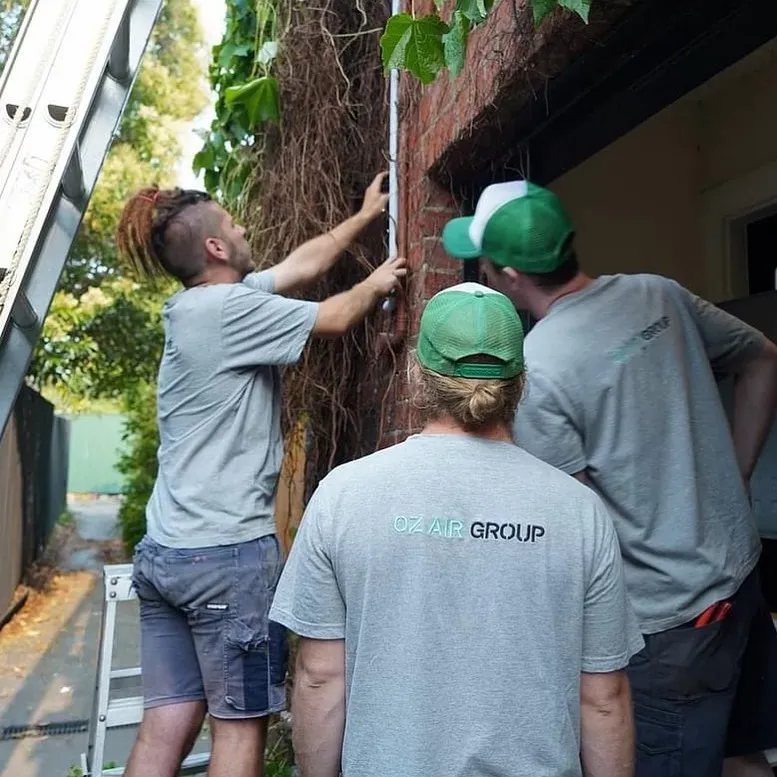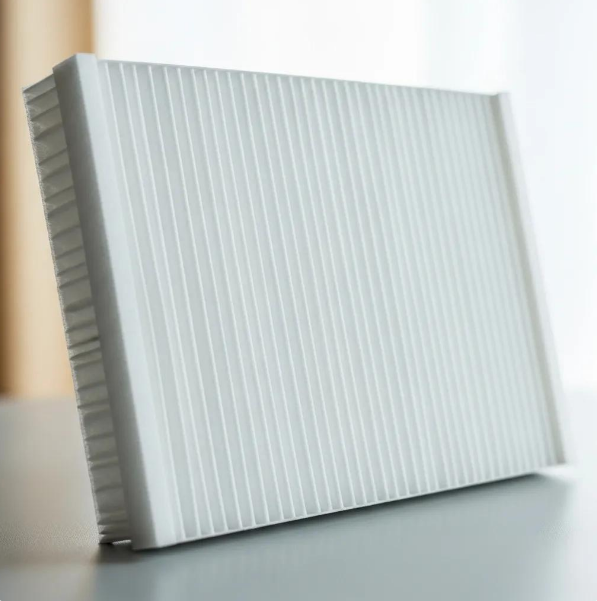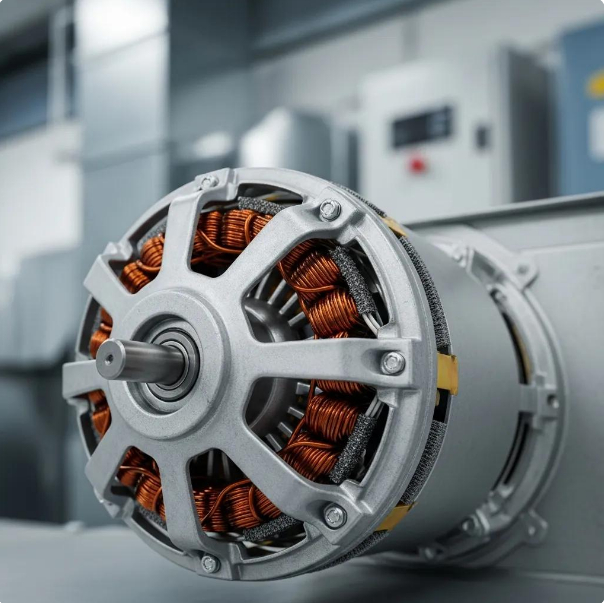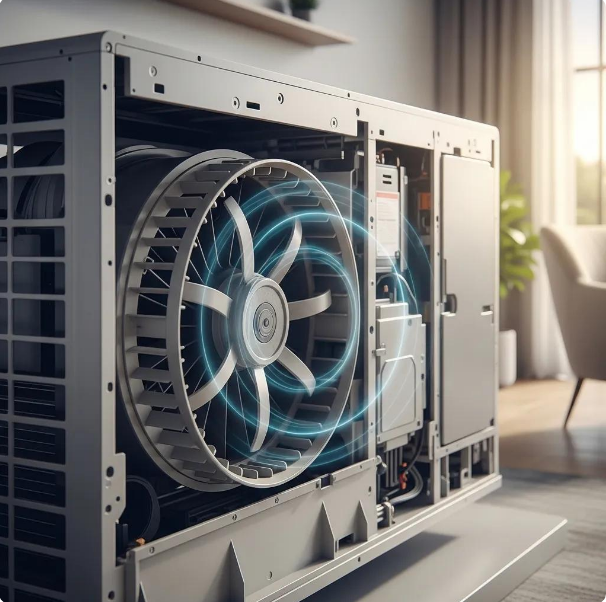Air conditioning installation process: Steps, Timing and Costs


Government Rebates Now Available on Energy-Efficient Air Conditioners when Replacing your Gas Heater.
There are several steps to install an air conditioning system. The process begins with preparing the installation site and ends with testing the newly installed system. Each step is crucial for ensuring the air conditioner functions efficiently and safely.
The air conditioning installation process is a systematic procedure for setting up a cooling system in a building. It involves a series of technical tasks that must be performed in a specific order. The installer plays a vital role in this process, using their expertise to ensure each step is completed correctly and safely.
The installation process can vary depending on the type of air conditioner. For example, a window unit installation is generally simpler than a split system, while a ducted system requires the most complex installation process.
For a split air conditioning system, the average installation time is typically between 4 to 8 hours, though this can vary based on the specific circumstances of each installation.
Here's a detailed list of the air conditioning installation steps:
- Install the mounting hardware: Securing the bracket for the indoor unit, providing a stable foundation for the system.
- Prepare the wall for conduit: Creating openings in the wall for refrigerant lines, electrical wiring, and drainage pipes.
- Install conduits and route the lines: Laying out and connecting the pathways for refrigerant, electricity, and drainage between units.
- Secure the indoor air handler: Mounting the indoor unit onto the installed bracket, ensuring its level and properly positioned.
- Install the outdoor condenser unit: Positioning and securing the outdoor unit in an appropriate location.
- Affix the refrigerant lines: Connecting the copper tubing between indoor and outdoor units to carry the refrigerant.
- Seal entry points: Closing off any gaps or holes created during the installation to maintain energy efficiency.
- Connect electrical wiring: Safely linking the power supply to both units and connecting communication wires.
- Vacuum the refrigerant lines: Removing any air or moisture from the lines to prevent system damage.
- Charge with refrigerant: Adding the correct amount of refrigerant to the system for optimal cooling.
- Test the system: Powering up the unit and checking all functions to ensure proper operation.
- Clean-up and debris removal: Tidying the installation area and removing any installation-related waste.
- Client education on system operation: Instructing the client on how to use and maintain their new air conditioning system.
- Final inspection: Conducting a thorough review of the entire installation to ensure all steps have been completed correctly.
What are the steps to Install split system air conditioner?
A split system air conditioner consists of two main components: an indoor unit (evaporator) and an outdoor unit (condenser). The installation process for this type of system is more involved compared to window units but less complex than ducted systems. Split system installations generally take less time and are more cost-effective than ducted air conditioning installations, making them a popular choice for many Australian homes.
Install the Mounting Hardware
The first step in split system air conditioning installation involves securing the mounting bracket for the indoor unit. This crucial stage sets the foundation for a stable and efficient system. Professional installers carefully select the optimal location, ensuring it's level and securely fastened to support the unit's weight.
Prepare the Wall for Conduit
Preparing the wall for conduit is a critical step in the air conditioning installation process. It involves creating a hole through the wall to allow for the passage of refrigerant lines, electrical wiring, and drainage pipes. The importance of this step lies in maintaining the building's structural integrity while facilitating the necessary connections between indoor and outdoor units.
Install Conduits and Route the Lines
Installing conduits and routing the lines is a key step in the air conditioning installation process. It involves creating a pathway for the refrigerant lines, electrical wiring, and drainage pipes between the indoor and outdoor units. This step is crucial for ensuring proper system functionality and efficiency. Professional installers carefully measure and cut the lines to the appropriate length, ensuring a neat and secure installation.
Secure the Indoor Air Handler
Securing the indoor air handler is a pivotal step in the air conditioning installation process. It involves carefully mounting the indoor unit onto the previously installed bracket. This step is crucial for ensuring the unit is stable, level, and correctly positioned for optimal airflow. Professional installers use precise measurements and levelling tools to achieve the perfect placement.
Install the Outdoor Condenser Unit
Installing the outdoor condenser unit is a critical step in the air conditioning installation process. This step involves positioning the outdoor unit on a stable, level surface, typically on the ground or a mounting bracket. The importance of this step lies in ensuring proper airflow around the unit and protecting it from potential water damage. Professional installers consider factors such as sun exposure, accessibility for maintenance, and noise concerns when choosing the ideal location.
Affix the Refrigerant Lines
Affixing the refrigerant lines is a crucial step in the air conditioning installation process. This step involves connecting the copper tubing between the indoor and outdoor units, which will carry the refrigerant. The importance of this step cannot be overstated, as it directly impacts the system's efficiency and cooling capacity. Professional installers ensure that the lines are properly insulated and secured to prevent leaks and maintain optimal performance.
Seal Entry Points
Sealing entry points is a vital step in the air conditioning installation process. This step involves closing off any gaps or holes created for the passage of refrigerant lines and electrical wiring. The importance of this step lies in maintaining the building's energy efficiency and preventing the ingress of pests or moisture. Professional installers use high-quality sealants and insulation materials to ensure a tight, weatherproof seal.
Connect Electrical Wiring
Connecting the electrical wiring is a critical step in the air conditioning installation process. This step involves safely linking the power supply to both the indoor and outdoor units, as well as connecting the communication wires between them. The importance of this step lies in ensuring the system receives the correct power supply and can operate safely and efficiently. Professional installers adhere to strict electrical codes and safety standards when performing this task.
Vacuum the Refrigerant Lines
Vacuuming the refrigerant lines is an essential step in the air conditioning installation process. This step involves removing any air or moisture from the refrigerant lines using a vacuum pump. The importance of this step lies in preventing potential system damage and ensuring optimal cooling efficiency. Professional installers use specialised equipment to achieve the required vacuum level, typically holding it for a specified period to ensure all contaminants are removed.
Charge with Refrigerant
Charging the system with refrigerant is a crucial final step in the air conditioning installation process. This step involves adding the correct amount of refrigerant to the system according to manufacturer specifications. The importance of this step lies in ensuring the system can perform its cooling function efficiently. Professional installers use precise measuring equipment to add the exact amount of refrigerant required, as both under- and over-charging can negatively impact system performance.
Test the System
Testing the system is the final and crucial step in the air conditioning installation process. This step involves powering up the unit and checking all functions to ensure everything is working correctly. The importance of this step lies in verifying that the installation has been successful and the system is operating at peak efficiency. Professional installers thoroughly check temperatures, airflow, and all control functions, making any necessary adjustments to optimise performance.
How does the installation process change for different types of air conditioners?
The installation process changes significantly for different types of air conditioners due to variations in their design, components, and complexity. Each air conditioning system has unique requirements that directly impact the installation procedure, time, and expertise needed.
The primary reason for these changes is the fundamental differences in the structure and operation of various air conditioning systems. Different types of air conditioners have distinct components and parts, which necessitate specific installation techniques. For instance:
- Multi Split Systems:
These systems consist of one outdoor unit connected to multiple indoor units. The installation process for multi split systems is more complex than standard split systems because it involves installing multiple indoor units in different rooms, routing longer refrigerant lines to connect all indoor units to the single outdoor unit and balancing the system to ensure even cooling across all zones This type of installation typically requires more time and planning than a standard split system.
- Ducted Air Conditioners:
The installation of ducted systems is generally the most complex and time-consuming. It involves installing a central unit, often in the roof space or under the floor. Creating an extensive network of ducts throughout the building, installing vents in each room and potentially modifying the building structure to accommodate the ductwork Due to these requirements, ducted system installations can take several days and may require a team of installers.
- Window Air Conditioners:
In contrast, window air conditioners have a relatively simple installation process. It typically involves creating or modifying a window opening to fit the unit, securing the unit in place and sealing around the unit to prevent air leaks This type of installation is usually quicker, often completed in a few hours by a single installer.
The complexity of the system directly correlates with the installation time required. While a window unit might be installed in a couple of hours, a ducted system for a large home could take several days to install properly.
Additionally, the installation process may change based on the specific features of each system. For example, systems with advanced filtration, humidity control, or smart home integration may require additional steps during installation to set up these features correctly.
What is the installation process of a Multi Split System air conditioner?
The installation process of a multi-split system air conditioner involves setting up one outdoor unit connected to multiple indoor units. This process is more complex than a standard split system installation as it requires careful planning of refrigerant line routes to each indoor unit and balancing the system for optimal performance. It differs from split air conditioner system installation in the number of indoor units installed and the complexity of the refrigerant line layout.
What is the installation process of Ducted Air conditioners?
The installation process of ducted air conditioners involves installing a central unit, typically in the roof space, and a network of ducts to distribute cooled air throughout the building. This process is significantly more complex and time-consuming than split air conditioner system installation. It requires extensive planning, ductwork installation, and often modifications to the building structure, making it a more involved and costly process.
What is the installation process of window air conditioners?
The installation process of a window air conditioner involves securing the unit in a window frame or through a wall. This process is generally simpler and quicker than split air conditioner system installation. It differs in that it doesn't require separate indoor and outdoor units or refrigerant line installation. However, it may require some minor carpentry work to ensure a secure and weatherproof fit in the window or wall opening.
How long does it take to install an Air conditioner?
On average, air conditioner installation time can take anywhere from 4 to 8 hours for a standard split system in a residential setting. However, this timeframe can vary significantly based on factors such as the type of air conditioner, the complexity of the installation, and whether it's a residential or commercial property.
How long does it take to install residential air conditioning?
Installing residential air conditioning typically takes about 4 to 8 hours for a standard split system. This timeframe accounts for the basic steps of mounting units, connecting refrigerant lines, and setting up electrical connections. However, factors such as the home's layout, the need for additional electrical work, or difficult-to-access installation locations can extend this time. The expertise of a professional installer, like those at Oz Air Group, is crucial in ensuring the installation is completed efficiently and correctly, minimising potential issues and delays.
How long does it take to install commercial air conditioning?
Commercial air conditioning installation generally takes longer than residential installations, often ranging from 1 to 5 days depending on the system's size and complexity. This extended timeframe is due to factors such as larger spaces, more complex ductwork, and potentially multiple units or zones. The installation may also need to be coordinated around business hours to minimise disruption. Professional installers play a crucial role in managing these complexities, ensuring the installation is completed as quickly and efficiently as possible without compromising on quality or safety.
Who can Install Air conditioning systems?
Air conditioning systems should be installed by licensed and qualified HVAC (Heating, Ventilation, and Air Conditioning) technicians. Choosing a professional air conditioner installer is crucial for ensuring the system is set up correctly, operates efficiently, and complies with all relevant Australian standards and regulations.
Oz Air Group in Melbourne specialises in air conditioning installation, bringing years of expertise to both residential and commercial projects. Their team of qualified technicians is well-versed in installing various types of air conditioning systems, ensuring optimal performance and longevity.
Attempting to install an air conditioner yourself can lead to numerous issues, including improper sizing, incorrect refrigerant charging, and potential safety hazards. Similarly, choosing a general electrician for air conditioning installation may result in suboptimal performance, as they may lack the specific knowledge and tools required for HVAC systems.
Can you Install air conditioner by yourself?
No, it is not recommended to install an air conditioner by yourself. DIY installation can lead to numerous problems, including inefficient operation, potential damage to the unit, and safety hazards. Additionally, improper installation may void the manufacturer's warranty and could result in higher energy bills due to suboptimal performance.
Can electricians install air conditioners?
While electricians can handle the electrical aspects of air conditioning installation, they typically should not install the entire system. Air conditioning installation requires specialised knowledge of refrigeration systems, which is not part of standard electrician training. Choosing a general electrician for air conditioning installation may result in improper refrigerant handling, incorrect system sizing, and other issues that could affect the system's performance and efficiency.
What to know before Installing an air conditioner?
Before installing an air conditioner, there are several important factors to consider. Firstly, it's crucial to choose the right air conditioning system for your specific needs. There are different types of air conditioners available, each with its own advantages and suitable applications. Understanding these options and selecting the appropriate system is vital for ensuring optimal comfort and energy efficiency in your space.
What is an air conditioning system?
An air conditioning system is a mechanical device designed to control the temperature, humidity, and air quality within an enclosed space. It works by removing heat and moisture from the indoor air, cooling it, and then circulating the cooled air back into the room. The basic principle involves the use of a refrigerant that absorbs heat as it evaporates and releases heat as it condenses, creating a cooling effect.
What are the different types of air conditioning systems?
1. Split System: Average cost to purchase and install ranges from $1,500 to $3,500
2. Multi-Split System: Average cost to purchase and install ranges from $3,000 to $7,500
3. Ducted System: Average cost to purchase and install ranges from $5,000 to $15,000
4. Window Air Conditioner: Average cost to purchase and install ranges from $400 to $1,000
5. Portable Air Conditioner: Average cost to purchase ranges from $300 to $800 (typically no installation required)
How to choose the right air conditioner system to install?
Choosing the right air conditioner system involves considering factors such as the size of your space, your cooling needs, energy efficiency ratings, and budget. It's important to calculate the correct capacity (in kW) needed for your space to ensure efficient cooling. Other considerations include noise levels, features like smart controls, and the system's adaptability to your home or office layout.
For expert guidance on selecting and installing the perfect air conditioning system for your needs, consider reaching out to Oz Air Group. Their team of professionals can provide personalised advice and ensure a smooth, efficient installation process. Contact Oz Air Group today to learn more about their air conditioning solutions and installation services.
Areas we service
Oz Air covers Melbourne and its northern suburbs.

Get in touch






.png)









.png)